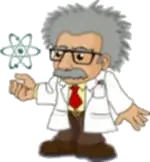Different 79704
Thirty-two boys and 34 girls came to the dance. How many different dance pairs can they make, given that each team is given: they can only dance for 1 minute and then take turns in 5 seconds? Calculate how long the dance evening would last for all the pairs to take turns.
Final Answer:

Tips for related online calculators
See also our permutations calculator.
See also our variations calculator.
Do you want to convert time units like minutes to seconds?
Would you like to compute the count of combinations?
See also our variations calculator.
Do you want to convert time units like minutes to seconds?
Would you like to compute the count of combinations?
You need to know the following knowledge to solve this word math problem:
combinatoricsbasic operations and conceptsUnits of physical quantitiesGrade of the word problem
Related math problems and questions:
- Boys and girls
 There are 20 boys and ten girls in the class. How many different dance pairs can we make of them?
There are 20 boys and ten girls in the class. How many different dance pairs can we make of them? - Competition 69474
 Ten girls and seven boys are in the dance group. Only one mixed couple is to go to the competition. How many possible pairs can we choose from?
Ten girls and seven boys are in the dance group. Only one mixed couple is to go to the competition. How many possible pairs can we choose from? - Dance party
 At the dance party, the organizer discovered that 168 different dance pairs could be formed from girls and boys. How many boys are there at the dance if there are 12 girls?
At the dance party, the organizer discovered that 168 different dance pairs could be formed from girls and boys. How many boys are there at the dance if there are 12 girls? - Dance ensembles
 Four dance ensembles were dancing at the festival. None had less than ten and more than 20 members. All dancers from some of the two ensembles were represented in each dance. First, 31 participants were on the stage, then 32, 34, 35, 37, and 38. How many
Four dance ensembles were dancing at the festival. None had less than ten and more than 20 members. All dancers from some of the two ensembles were represented in each dance. First, 31 participants were on the stage, then 32, 34, 35, 37, and 38. How many - Gertrude 62304
 Six boys and six girls (among them Emil, Félix, Gertrude, and Hanka) want to dance. The number of ways they can make six (mixed) couples if Emil does not want to dance with Gertrude and Hanka wants to dance with Felix is?
Six boys and six girls (among them Emil, Félix, Gertrude, and Hanka) want to dance. The number of ways they can make six (mixed) couples if Emil does not want to dance with Gertrude and Hanka wants to dance with Felix is? - School group
 There are five girls and seven boys in the group. They sit in a row next to each other. How many options if no two girls sit next to each other?
There are five girls and seven boys in the group. They sit in a row next to each other. How many options if no two girls sit next to each other? - Quiz or test
 I have a quiz with 20 questions. Each question has four multiple-choice answers, A, B, C, D. THERE IS NO WAY TO KNOW THE CORRECT ANSWER OF ANY GIVEN QUESTION, but the answers are static, in that if the "correct" answer to ; 1 = C, then it will always be e
I have a quiz with 20 questions. Each question has four multiple-choice answers, A, B, C, D. THERE IS NO WAY TO KNOW THE CORRECT ANSWER OF ANY GIVEN QUESTION, but the answers are static, in that if the "correct" answer to ; 1 = C, then it will always be e
